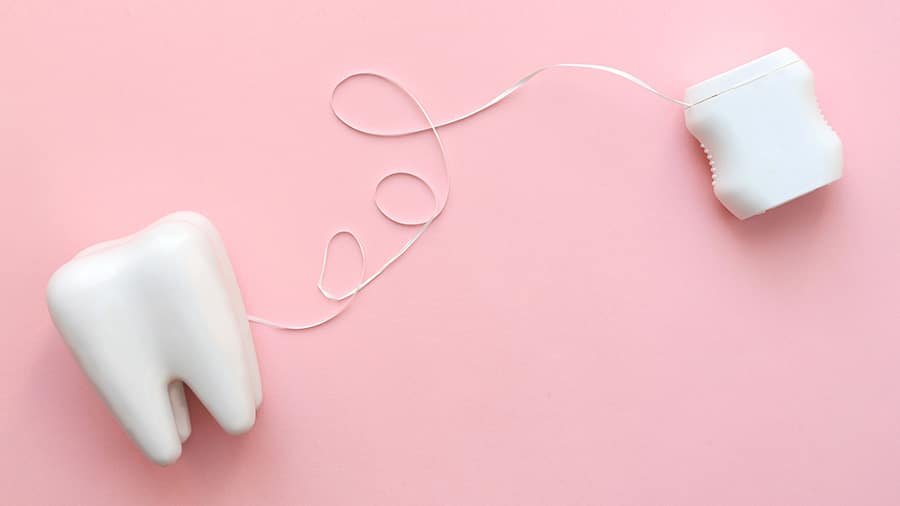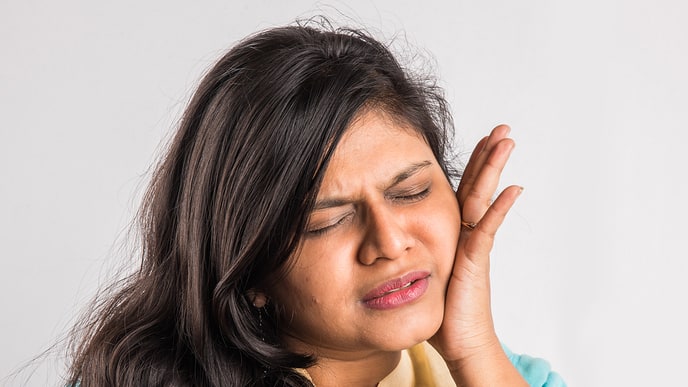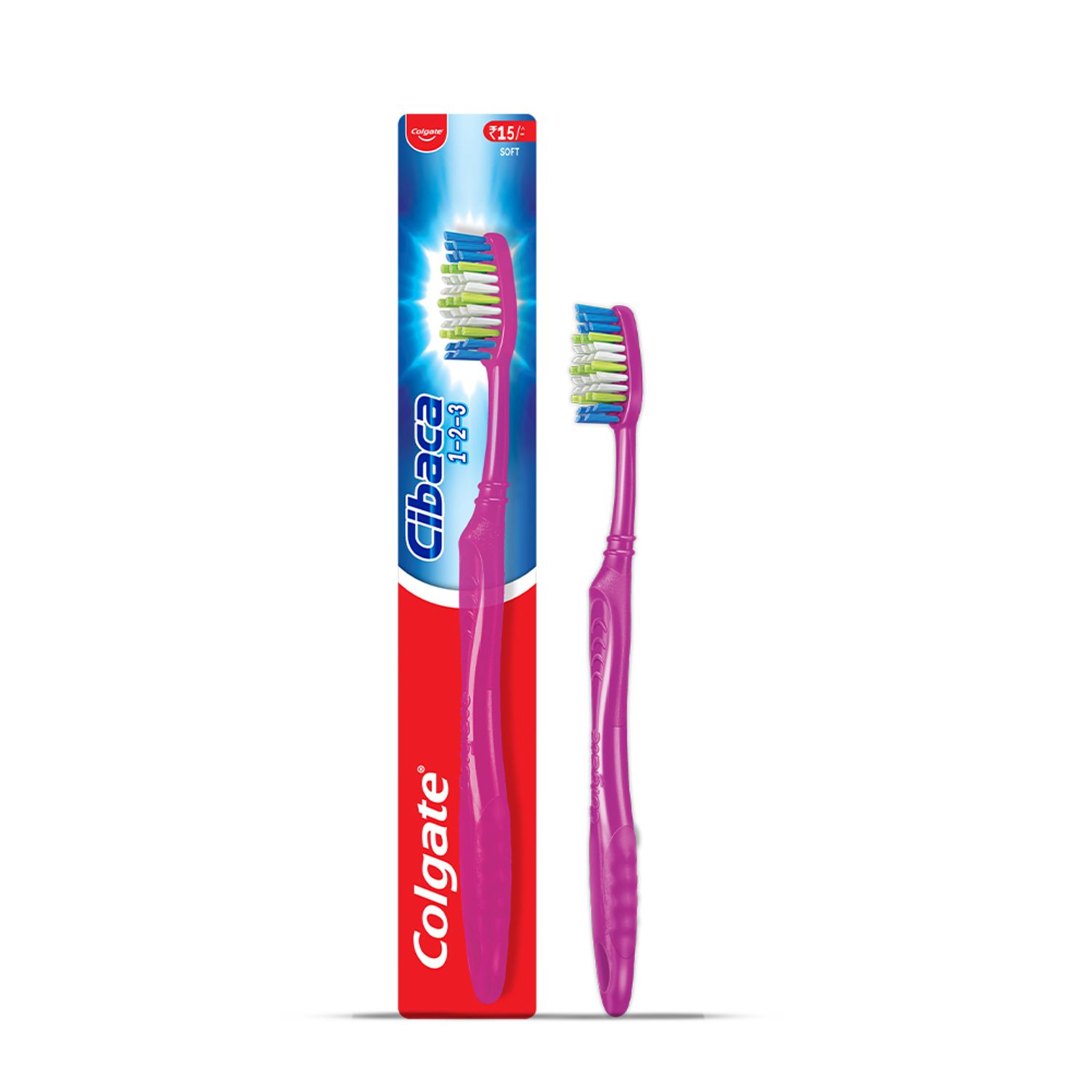Flossing
As important as it is to floss your teeth, it's equally important to make sure you're flossing correctly. No matter which type you use, here are some pointers:
- Use a strand that measures just over the length of your arm (it'll shorten as you wrap the ends)
- Loosely wrap six inches of it around your middle finger while holding it in place with your thumb
- Use your thumb and index finger from your free hand to straighten the floss between both hands
- Ease the floss between each tooth with a delicate back-and-forth motion
Be careful not to snap the floss through the seam of both teeth, as you can damage your gums this way. The IDA advises gently curving the floss around the base of each tooth. Use a sliding motion to scrape the floss gently underneath the gums before moving on. Curl the used portion of floss around your middle finger as you move from tooth to tooth, too. This keeps you from putting germs back into your mouth and reinforces your grip as you progress from one end of your jaw to the other.
How Both Types Differ
Floss typically comes in two types: nylon (multifilament) or Polytetrafluoroethylene (PTFE) – which is a monofilament. In the case of nylon floss, you can find both waxed and unwaxed.Research by the Journal of Periodontology, recently reported by The Guardian, found that 79 percent of those surveyed preferred waxed floss compared to 21 percent for unwaxed after using both types on the same areas (front and back) in their mouths. The biggest complaint associated with waxed floss, however, was that the wax made it seem too thick. Those who preferred unwaxed floss did so because it was thinner (and therefore easier to use) than the waxed. But waxed floss has its own benefits, suggests The Huffington Post, in that it helps ease the floss between your teeth so you don't hurt yourself.
Despite the preference for waxed floss, an even earlier study drew the conclusion that there is no significant difference between the two. According to the Indian Dental Association, dental floss may be flavored or unflavored and waxed or unwaxed. The waxed and flavoured varieties of flossing thread are easier to use and give a greater feeling of freshness. Proper flossing removes plaque and food particles in places where a toothbrush cannot reach- under the gum-line and between the teeth. Daily flossing is recommended because plaque build-up can lead to tooth decay and gum disease . It stimulates gums, polishes tooth surfaces, reduces gum bleeding and prevents gum disease.
For Braces, Used Waxed Dental Floss
Having braces isn't an excuse to neglect flossing, and it's important to teach your children that. Nonetheless, it is more difficult. Waxed floss incorporated into a "floss threader" is the best way to floss with braces. This combination helps the braces-wearer get between each tooth despite the wiring that inhibits his or her reach. Unwaxed dental floss is much more likely to catch on the braces and result in the floss shredding.
Ensuring you have good oral care is an important aspect of your overall health. Flossing, whether you use a waxed or unwaxed product, is one of the two keys to a solid mouth health routine, next to brushing with a toothpaste recommended by your dentist. So be sure to floss daily, extracting food particles stuck in those hard-to-reach spots that a toothbrush can't penetrate. Don't forget your dental check-up at least twice a year. Remember your dentist is the most well-suited to assess whether your brushing and flossing is doing its job.
This article is intended to promote understanding of and knowledge about general oral health topics. It is not intended to be a substitute for professional advice, diagnosis or treatment. Always seek the advice of your dentist or other qualified healthcare provider with any questions you may have regarding a medical condition or treatment.
ORAL HEALTH QUIZ
What's behind your smile?
Take our Oral Health assessment to get the most from your oral care routine
ORAL HEALTH QUIZ
What's behind your smile?
Take our Oral Health assessment to get the most from your oral care routine













